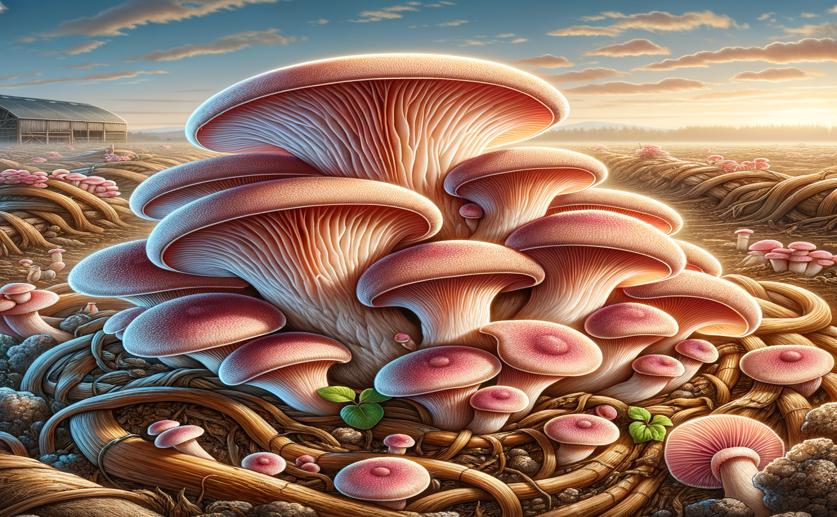
Nutritional Benefits of Pink Oyster Mushrooms Grown on Farm Waste
Jenn Hoskins
23rd April, 2024

Image Source: Natural Science News, 2024
Key Findings
- In Brazil, pink oyster mushrooms were grown on banana leaf and sugarcane waste, showing high nutrition
- These mushrooms had high protein and fiber but were low in fat and calories, ideal for healthy diets
- Grown on sugarcane waste, the mushrooms had more antioxidants, beneficial for preventing disease
References
Main Study
1) Nutritional and antioxidant potential of Pleurotus djamor (Rumph. ex Fr.) Boedijn produced on agronomic wastes banana leaves and sugarcane bagasse substrates.
Published 22nd April, 2024
https://doi.org/10.1007/s42770-024-01336-8
Related Studies
2) Mushroom cultivation in the circular economy.
3) Antioxidant activity applying an improved ABTS radical cation decolorization assay.
Journal: Free radical biology & medicine, Issue: Vol 26, Issue 9-10, May 1999
4) A review on valorization of oyster mushroom and waste generated in the mushroom cultivation industry.
5) Factors affecting mushroom Pleurotus spp.



 14th April, 2024 | Jenn Hoskins
14th April, 2024 | Jenn Hoskins